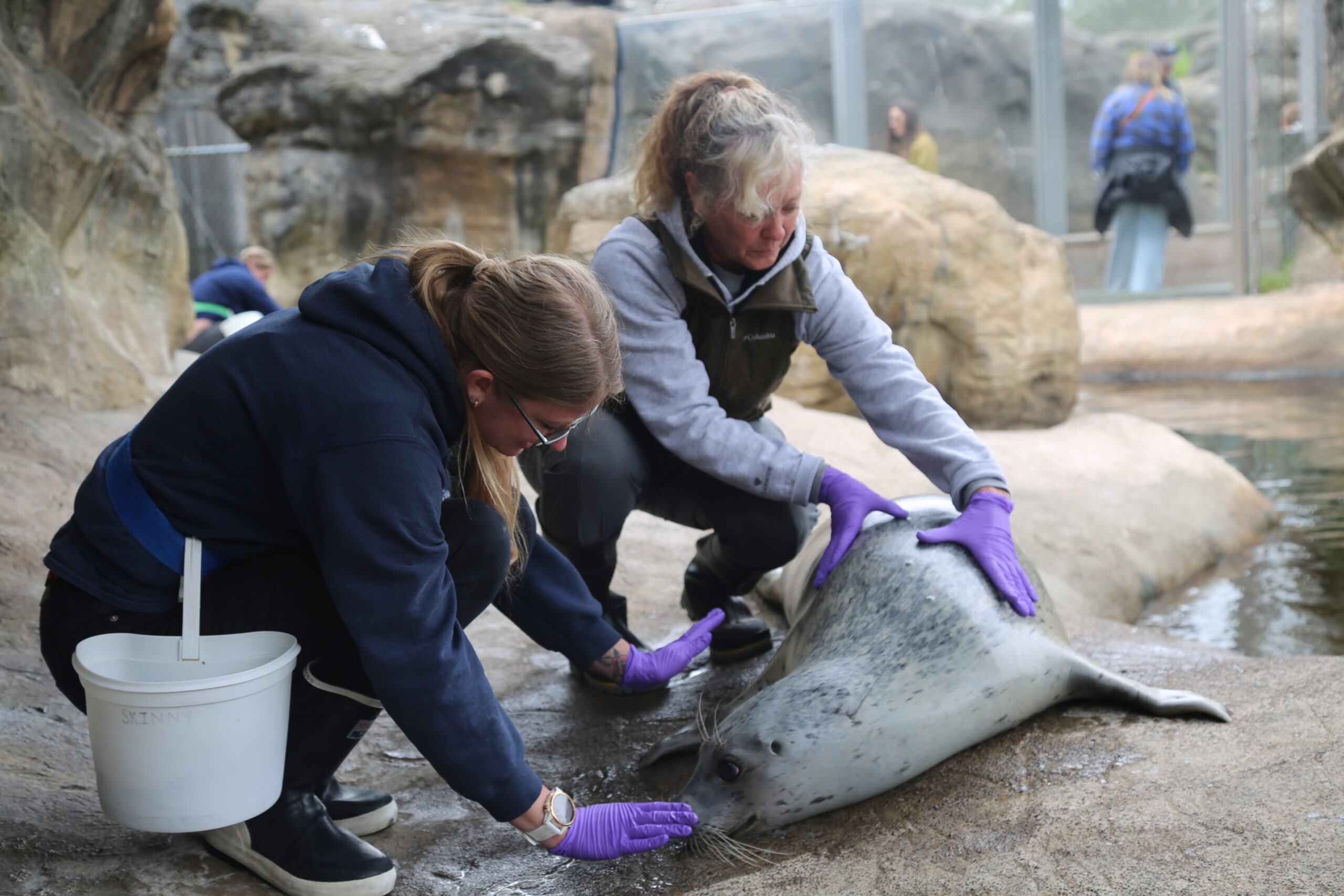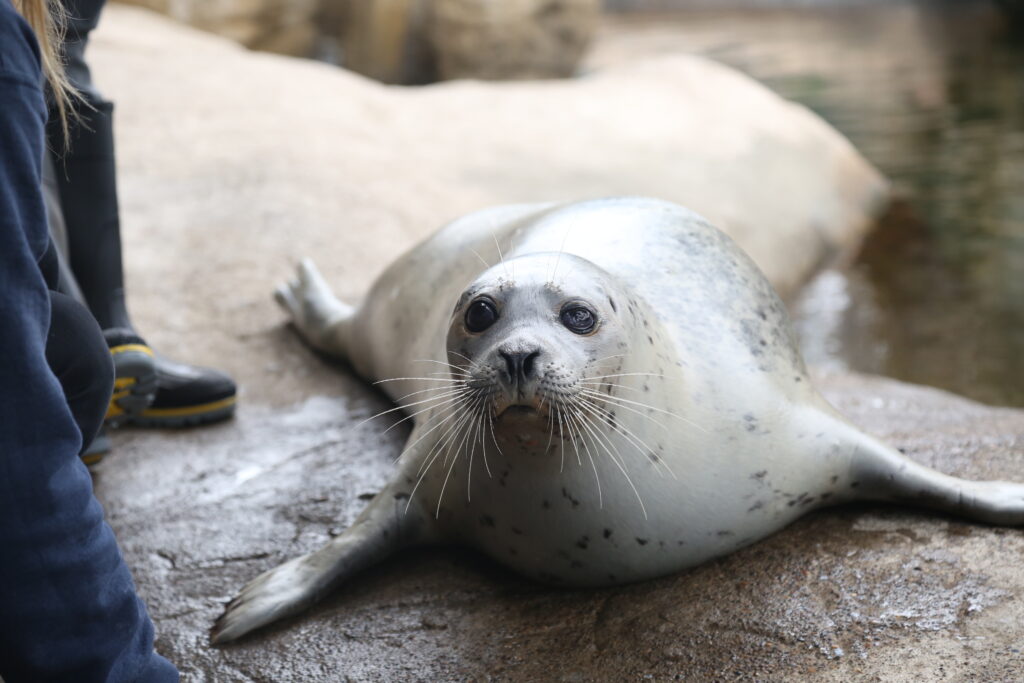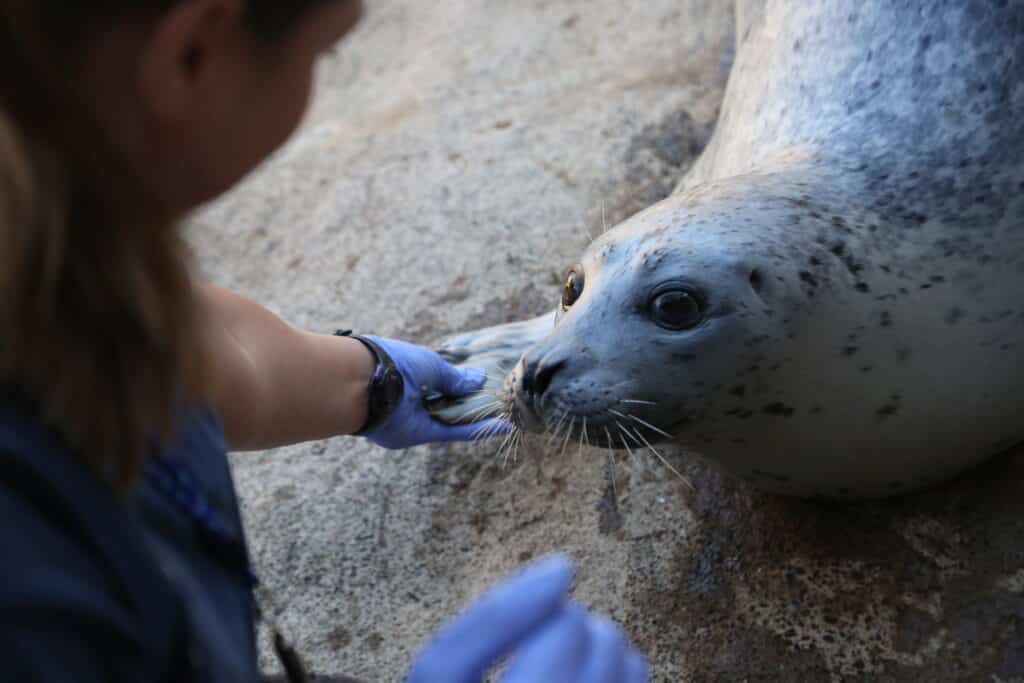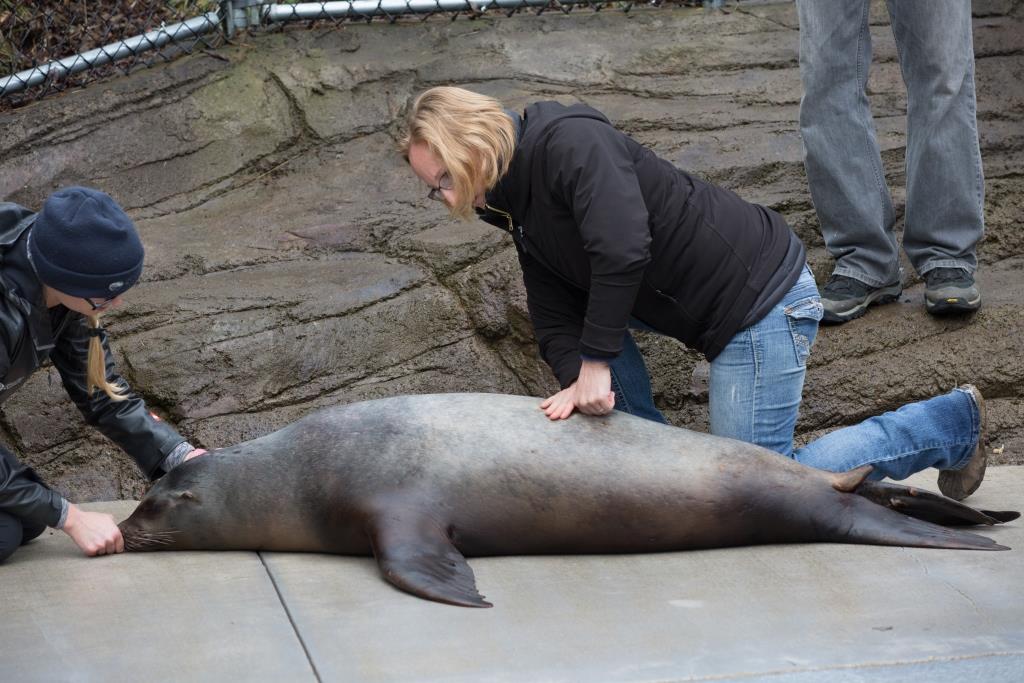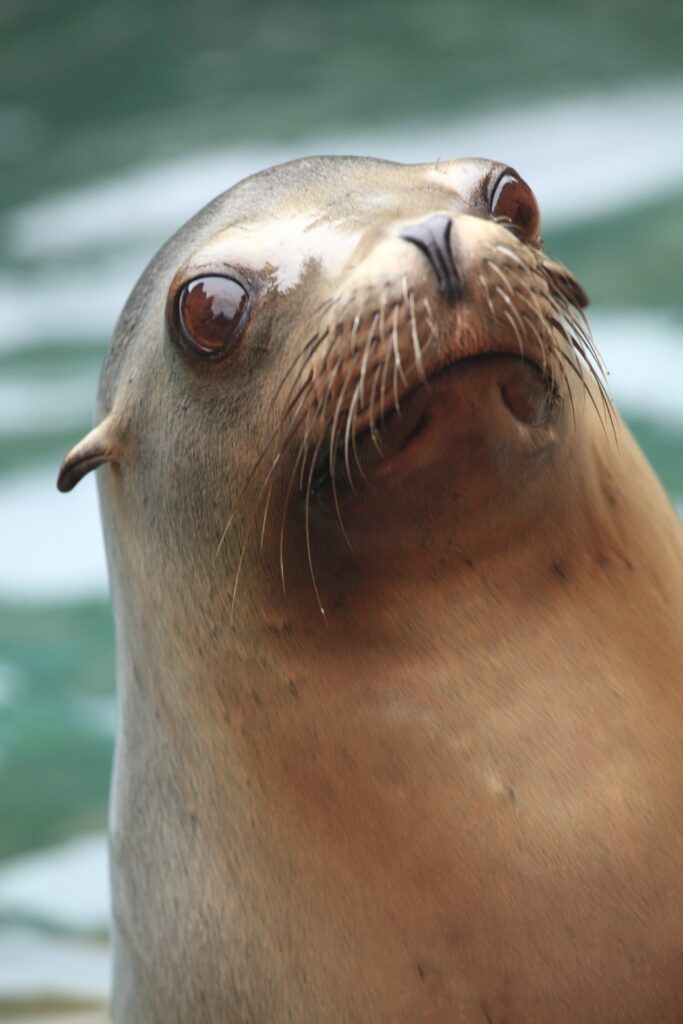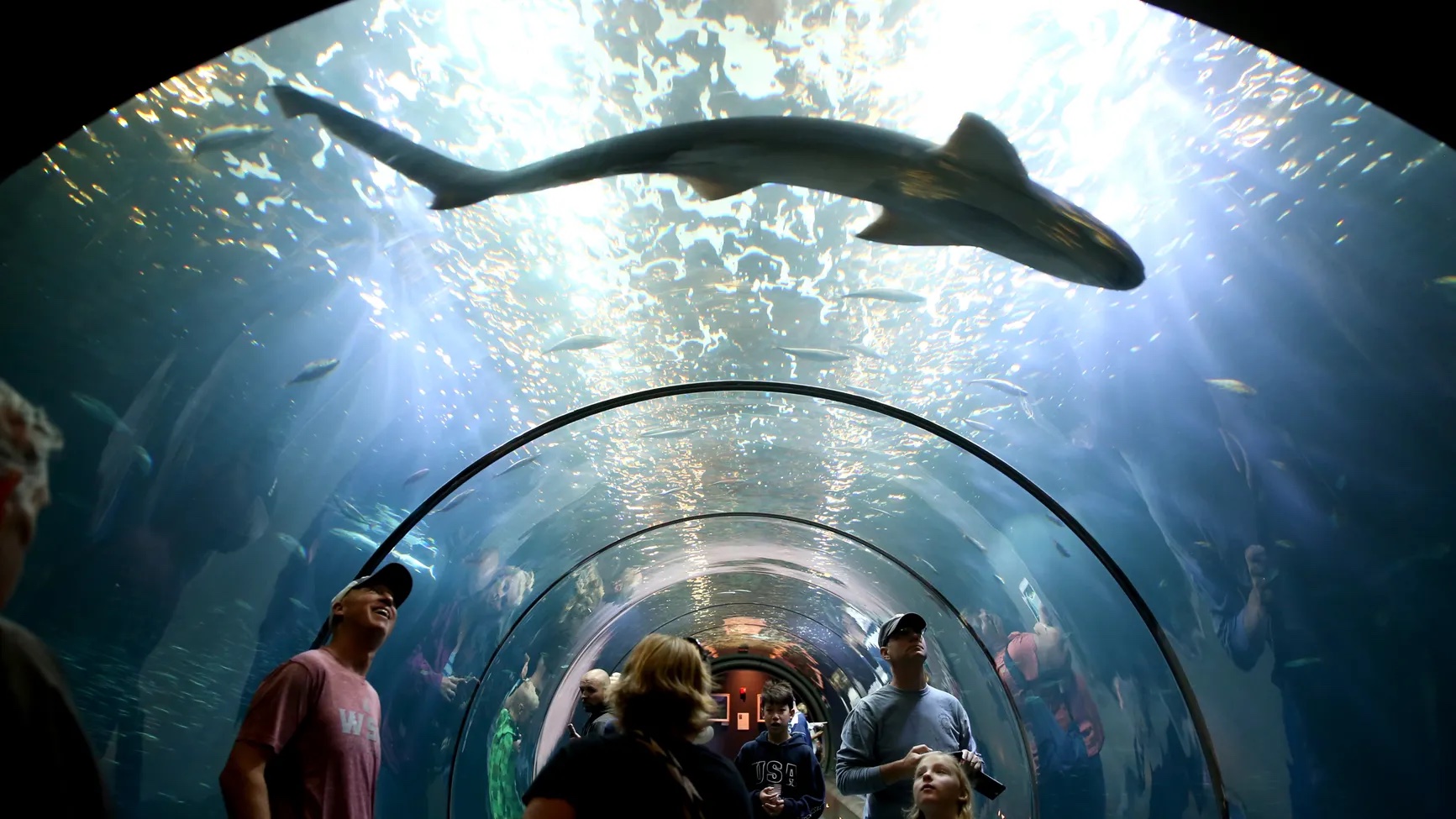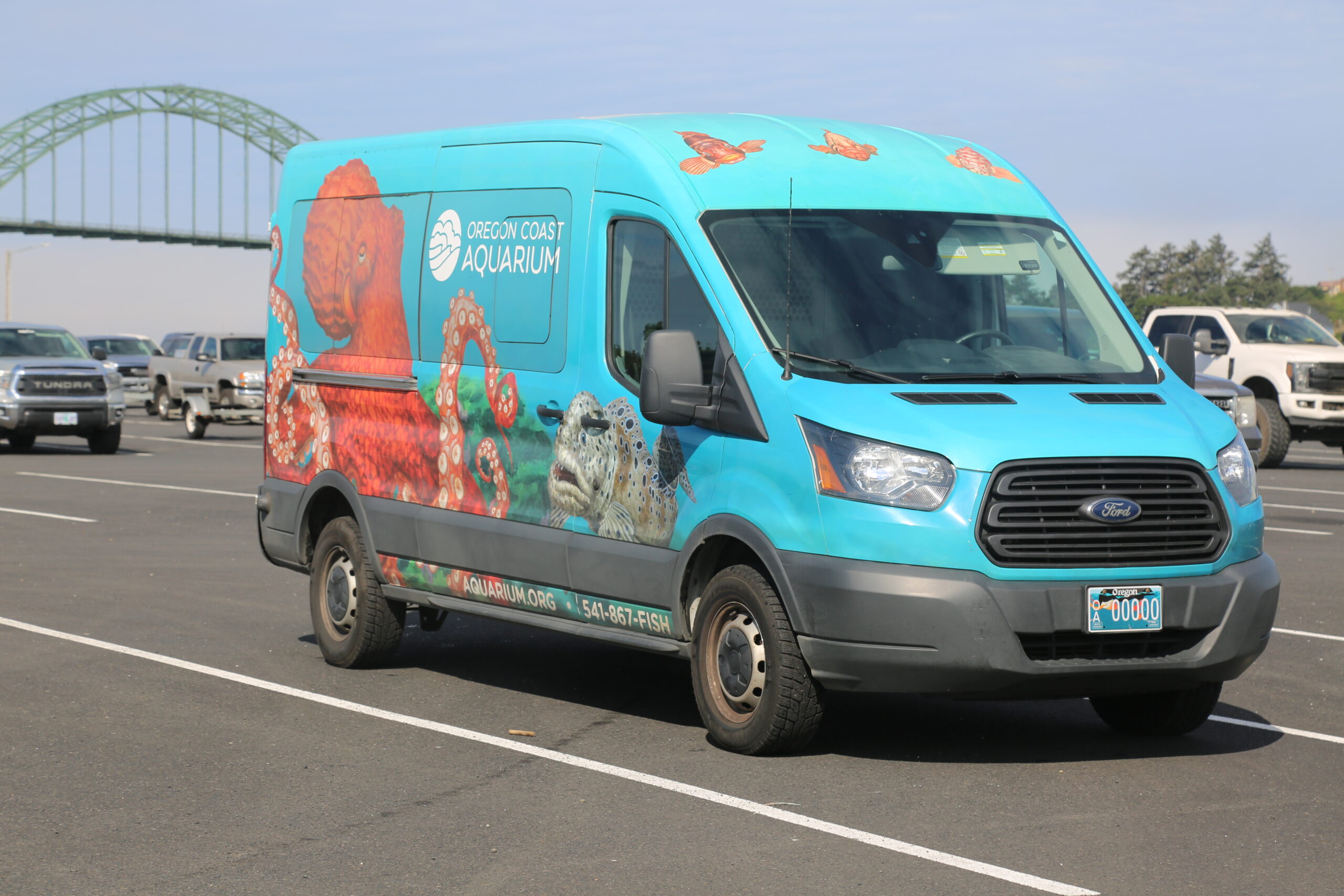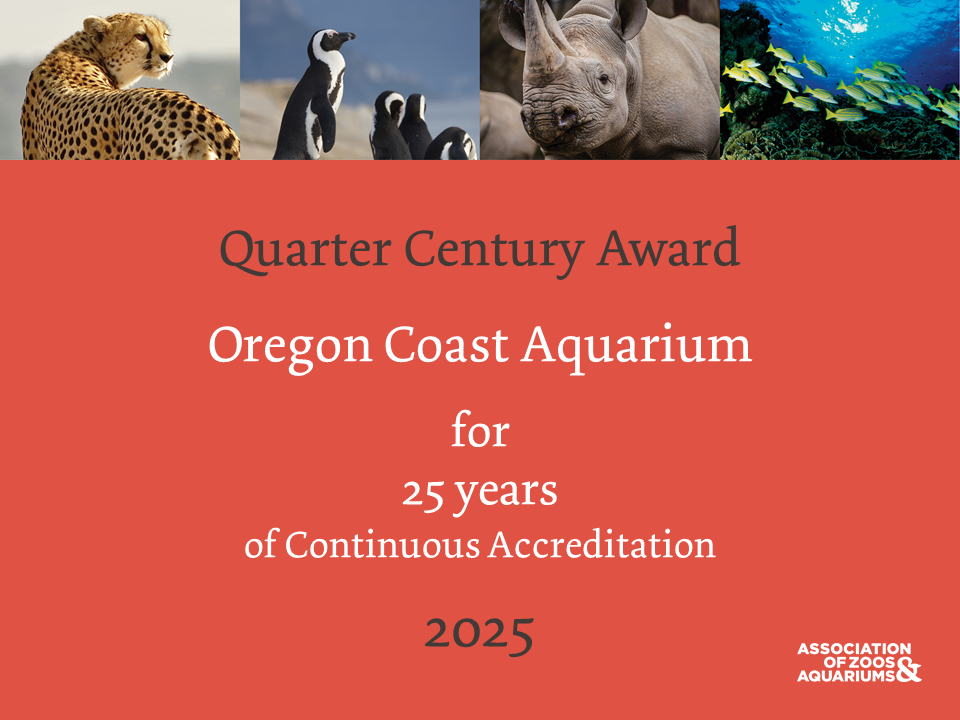Animal care at the Oregon Coast Aquarium (OCAq) goes far beyond just keeping them well fed and their habitats clean. Marine species require specialized care, conducted by specialized staff with dedicated expertise.
The top-notch care provided by staff is a primary reason OCAq animals often live to be considerably older than their wild counterparts. In fact, one OCAq resident harbor seal, named Skinny, turned 50 years old this past June, making her the world’s oldest known living Pacific harbor seal.
Brittany Blades is the Aquarium’s Curator of Marine Mammals. “We have three sea otters, five seals and three sea lions, so we’re at 11 right now,” she said of the animals under their care.
How do you ensure the health and wellness of 11 marine mammals, each with a unique personality and needs? Training plays a huge role. “We train them as much as we can for any medical procedure…the ultimate goal is voluntary participation,” Brittany said
That means an animal doesn’t need to be restrained or sedated for a procedure like a blood draw or radiograph. They practice entering a kennel voluntarily, so when the time comes for an injection or exam, they feel comfortable and confident throughout the process
As they get older, marine mammals can experience many of the same things that geriatric humans do.
“Things that humans deal with as we age — heart failure, arthritis, cataracts — animals can get as well,” Brittany said. “Harbor seals often develop cataracts once they are in their mid-20s or so, so eye care is a top priority, especially in geriatric animals,” she said. “The other thing that shows up is arthritis. Seals, sea lions and sea otters–all three species can become arthritic.”
The animals participate in their own daily care as well, allowing their keepers to examine their paws and flippers, administer eye drops, or even brush their teeth.
Brittany said that’s another reason the animals are trained in different behaviors, “even the ‘fun’ behaviors, like asking them to stand up or turn around on land or jump out of the water. With those behaviors, if they stop meeting the criteria that they used to be able to do, that’s an indicator to us that maybe there’s something going on, so that’s when we start trying to diagnose if there is arthritis or an injury.”
Daily observation and medical checkups are only a part of the quality care and subsequent long life of OCAq residents. Follow-up treatment can include physical therapy, chiropractic adjustments, laser therapy and more.
When asked if any specific animal came to mind when discussing geriatric care, Brittany described Quill, a female California sea lion who passed away several years ago at the age of 30, saying that her final years at OCAq were a testament to the quality of care she received.
“Quill was extremely arthritic and on considerable pain medication,” Brittany said, “but we weren’t seeing improvement.”
Then Quill’s caregivers considered alternative options.
“We did acupuncture one time, then we moved on to weekly chiropractor treatments and laser therapy, plus daily physical therapy. She was showing marked signs of improvement with her mobility.”
The animals do reach a point, however, where a major decline in their quality of life can no longer be successfully treated. While the regime made Quill’s golden years more comfortable, caring for geriatric animals also includes making difficult decisions.
“The decision to humanely euthanize is absolutely the hardest decision to make,” Brittany said. “We have to take our personal feelings out of it and consider what’s best for the individual animal. It’s not black and white because every animal is different, and there are several factors involved.”
While saying goodbye to Quill was difficult, staff were reassured knowing they did everything possible—and their experience with Quill gave them valuable experience that can be applied to OCAq’s other marine mammals.
Brittany’s team currently cares for several geriatric marine mammals, including Schuster the sea otter (14), Skinny the harbor seal (50), Elvis the harbor seal (32), and Miller the harbor seal (30). The rest of the marine mammals, while younger, also have special needs—for example, Catalina the California sea lion only has one eye, and several of the harbor seals are completely blind. Despite these obstacles, they thrive under the care of their keepers.
“Our focus will always be on providing the best care and environment possible for our animals, and we’ll use every tool and method available to make that happen.”

